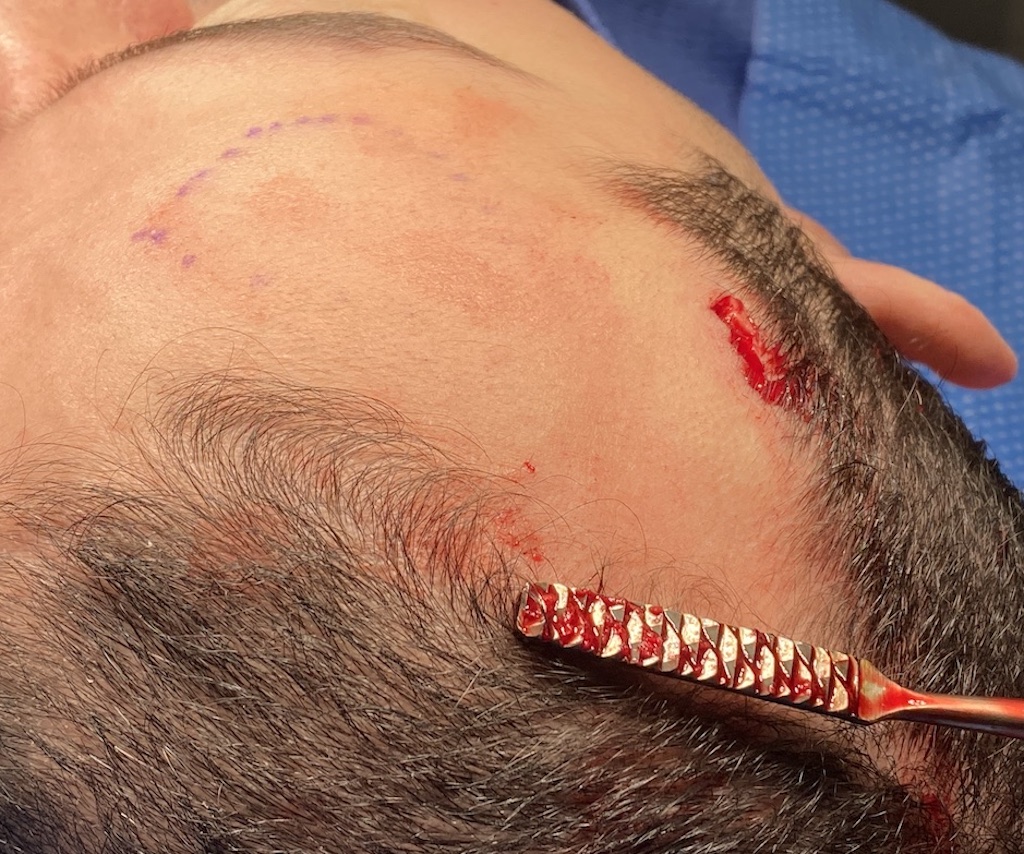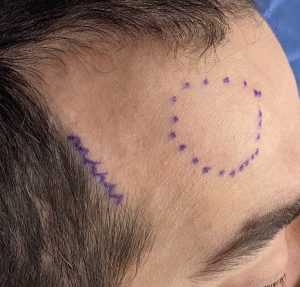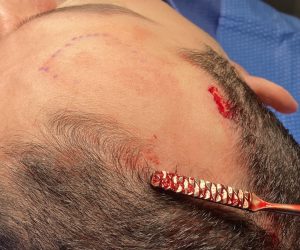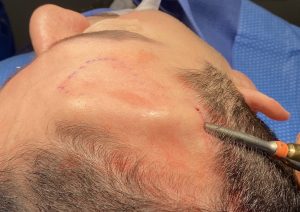There are a variety of small contour irregularities (lumps and bumps) that can occur on the forehead from either congenital or traumatic origins. Such bony prominences, even if they are small in. size can be very visible on the broad expanse of the forehead. The reflection of the light from various angles on the forehead can make even the small irregularity visible and aesthetically concerning.
While such forehead irregularities can easily be burred down by a high speed handpiece, as is done anywhere else on the skull, getting adequate incisional access to do so may create its own aesthetic liability. In the spirit of the important aesthetic concept of ‘a small problem deserves no more than a small procedure’ taking down small forehead raised bony areas should be done with the smallest incision possible.
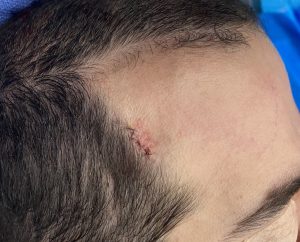
When the frontal hairline does not permit good incisional access the temporal hairline can be used. With the small incision needed for rasping the healed scar will be invisible.
Dr. Barry Eppley
World-Renowned Plastic Surgeon

